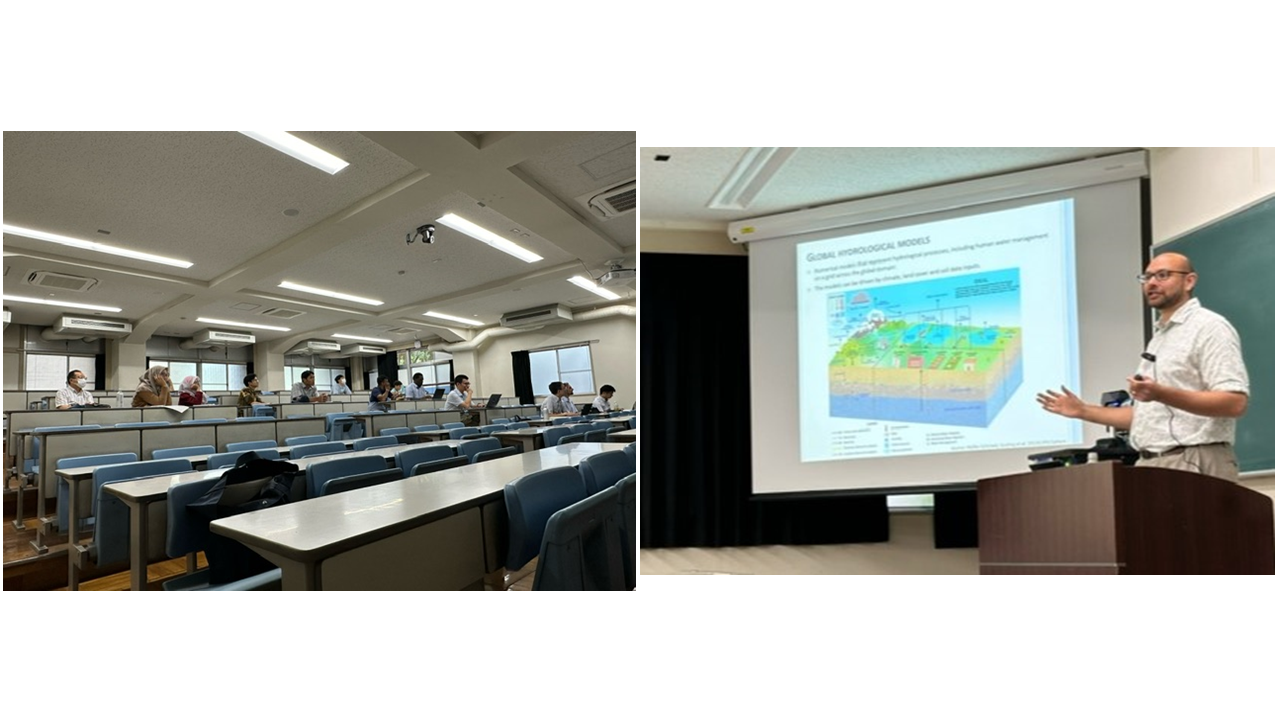トピックス
【2024.8.2 GIR公開セミナー報告】Dr. Simon N. Gosling “Hydrological extremes and climate change at the global-scale”
- イベント報告
- 2024.8.8

◆講演者: Dr. Simon N. Gosling (英国、ノッティンガム大学、教授)
◆講演タイトル:”Hydrological extremes and climate change at the global-scale”
◆日時:2024年8月2日(金)10:30~11:30
◆会場:東京農工大学 府中キャンパス 2号館 1階 2-11講義室、Zoom
◆言語:英語
◆開催担当者:農学研究院 ジュリアン ブランジェ 准教授(グローバルイノベーション研究院 食料分野 ジュリアン・ブランジェチーム)
◆開催案内
◆参加人数:20人
講演概要
Dr. Gosling from Nottingham University (UK) gave a lecture about “Hydrological extremes and climate change at the global change” on August 2nd.
Generally, the performances of global hydrological models (GHMs) are on-par with catchment hydrological models, but the formers tend to perform better in wetter areas and at lower elevations.
The reliable performance of GHMs is a necessary condition for employing their outputs in attribution, flooding, drought, and water scarcity analysis. In a 2021 Science publication, multiple GHMs were used to assess the cause of drying and wetting trends across the globe. These past observations can only be replicated by GHMs by considering human induced climate change.
Terrestrial water storage (TWS) is the total water on land, encompassing water in vegetation canopies, snow and ice, rivers, lakes and reservoirs, wetlands, soil and groundwater. GHMs were used to assess current and future evolution of TWS which is anticipated to decline substantially in most of the Southern Hemisphere as well as for the United States, most of Europe and the mediterranean.
The talk attracted multiple questions, notably about the motivations behind the selection of the multiple climate models used to force GHMs. Owing to time and storage constraints, a rational choice is to select 4 to 5 climate models, ensure that belong to independent institutions and cover most the uncertainty on the full CMIP6 ensemble.
このページの上部へ